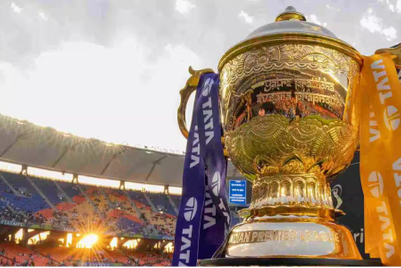
A recent study by market research and consulting firm Ipsos, shows that for many countries across Asia, LGBTQIA+ rights are bottom of the list of issues that consumers want brands to take a stand on.
"Change has to start somewhere," says David Ko, managing director RFI Asia. "While it is true that LGBTQ+ rights may not be a top priority for consumers in socially conservative markets across Asia, it is still important for brands to take a stance and run Pride campaigns."
Brands have the ability to influence societal attitudes and drive positive change, and study after study has shown that it’s good for business too. The LGBTQIA+ community in APAC is a growing demographic that needs to be recognised, making up about 5–10% of the population (not to mention the projected "hidden" number), with an estimated US$3.7 trillion in global spending power.

"By showing support for the LGBTQ+ community, brands can contribute to the ongoing conversation around inclusivity and equality, encouraging greater acceptance over time," adds Ko. "It may take longer for the impact to be felt in socially conservative markets in North Asia especially, but the consistent efforts of brands can contribute to a shift in attitudes and pave the way for progress."
Pride marketing: Loudest is not the most influential
"Rainbow-washing" or "pink-washing," when a company superficially associates itself with LGBTQIA+ pride for profit or positive brand perception, has been an ongoing issue. Social media is rife with parody memes about companies magically becoming inclusive toward the LGBTQIA+ community for the month of June, only to go back to business-as-usual come July.
"Loud and proud campaigns only work for the LGBTQ+ community and its allies, if they’re followed up with consistent, long-term action," says Rashmi Vikram, chief equity officer, Dentsu APAC.
"Rather than the tokenism of a Pride campaign to simply be a part of the bandwagon, working to ensure truly inclusive policies that support their LGBT+ employees that ensure a safe, inclusive and equitable working environment will go a long way toward building brand equity,” says Vikram. “If not for the consumer brand, certainly for the employer brand. This action is especially true of markets that are more socially conservative."
Zoe Chen, strategy director at Virtue APAC, says that after years of ‘rainbow-everything’, people are now hyper-aware and ultra-sensitive towards any brand trying to profit off the ‘inclusive’ message.
"True authentic support starts with concrete actions that support the LGBTQ+ community in real life. For example, brands can increase media representation with authentic and realistic depictions of the community (as opposed to stereotypical or extreme portrayals) or create services of value like Google Maps and Yelp allowing people to identify their business as being LGBTQ-friendly, Transgender Safe Space and/or LGBTQ-plus-owned," says Chen. "Only when concrete actions are in place, should loud & proud campaigns be implemented to rally wider support for the community and cause."
Because they are still the rare exception in the marketing landscape, loud and proud Pride campaigns can still have a role in reshaping public opinion and establishing new societal standards in Asia.
"While loud and proud campaigns create immediate visibility and awareness, and play a role in advancing inclusion, if care is not taken, they may be reduced to ‘rainbow-washing’ and taking advantage of a marketing opportunity without actually investing the effort towards driving tangible outcomes for the community," says Sonali Malaviya, chief strategy & transformation officer, South Asia, EssenceMediacom.
WPP Unite’s Beyond the Rainbow report called out that 74% of LGBTQIA+ people and 50% of those who do not identify as LGBTQIA+ think brands should do more to support the community outside of the Pride season.
"To get that support right, brands need to start from within," says Marion McDonald, WPP Unite co-chair for Australia. "Have a diverse recruitment approach that attracts LGBTQ+ talent, ensure inclusive people policies and ways of working, create safe spaces for your LGBTQ+ employees and ensure that inclusivity is embedded within your company culture and innovation processes."
The consensus is that the best way brands can engage with the LGBTQIA+ community authentically is to ensure that they involve the community in the process of creating any communication or collateral designed for them.
"'Nothing about us, without us' as we say!" Says Tara McKenty, head of innovation & co-ECD, BMF. "Ensure you have LGBTQIA+ people working on the creative briefs – if you don’t have our community in your creative department or within your agencies that's an issue – hire a LGBTQIA+ director. It also shouldn’t only be up to LGBTQIA+ people within organisations to champion for budgets, or the work, we need support from allies for this in leadership.”
“Oh, and guess what,” adds McKenty, “the LGBTQIA+ community outspends our straight counterparts by double, so showing up for the LGBTQIA+ community is not only the right thing to do, our rainbow dollar is real, and it makes business sense!"
Dealing with a backlash: If you try to please everyone, you will please no one
When you look at brands in America (US retail chain Target / BUD Light etc) withdrawing content that supports the LGBTQIA+ community because of well-funded right wing backlash, it's easier to see why many people mistrust their intentions in the first place.
Should brands have a better strategy than just withdrawing support in response to threats of boycotts or complaints around LGBTQIA+ advocacy? How should brands handle this?
"It is important for brands to prioritise values over the fear of short-term backlash and approach Pride campaigns empathetically, keeping in perspective that a retraction can perhaps do more harm than good – both to the cause and to the brand," says Malaviya.
Indeed. While the immediate impact of a backlash for brands might result in monetary loss, it’s important to keep in mind the impact on long-term brand equity, experts suggest.
"Brands who are ambivalent on issues will lose with both audiences – those pro-LGBTQ+ issues and those against," says Vikram. "This is certainly the case for Target, as reports suggest anti-LGBTQ+ supporters are against the brand having created products celebrating Pride. While those who are pro-LGBTQ+ rights are justifiably enraged at the brand having capitulated. Target is in a lose-lose situation here."
It's advised that when developing a campaign that supports a sensitive social issue such as LGBTQIA+ rights, crisis-management and scenario-mapping strategies need to be in place.
"This should include community management guidelines against negative comments, PR statements to defend the campaign and most importantly, internal and management buy-in to support the work and protect all individuals involved," says Chen. "Brands could even prepare a follow-up campaign that responds to the backlash to strengthen their stance on the issue."
A good example of this in action, cites Chen, is how North Face recently reacted to the backlash to their recent Summer of Pride campaign. "Their public statement defended their collaboration with drag queen Pattie Gonia in a clear and concise manner, consistent with their brand values and philosophy, gaining them fans within and beyond the LGBTQ+ community."
“Brands need to keep in mind that unless their audience are all right wing, the loudest voices are not always the most influential voices,” says Chen. “Any campaign focused on social issues is bound to offend some customers, and if you try to please everyone, you will please no one.”
While the anti-LGBTQIA+ and anti-trans rhetoric has increased across the US, a growing number of online netizens have expressed their disappointment in brands backtracking their support for the community.
"It’s important to note that the vocal protests are from a minority segment of the larger population,” says Vikram. Most people, according to the latest Ipsos Pride Month survey, are favourably disposed toward LGBT+ rights."
And according to the Culture of Trust report by Vice Media Insights, 59% of global youth want to see brands stand up for what they believe in and 71% trust a brand that dares to take risks. The report concludes that young people want to see companies taking risks in the name of progress, beyond simply paying lip service or conveniently aligning themselves with the hottest cause of the moment.
"In an increasingly polarised and divisive climate, brands will be called to task and asked to choose a side," says Vikram. "In such an event, it’s wise to know who the brand is, and who they’re for. The most recent Ipsos Pride Month study clearly shows Gen Z and millennials are very pro-LGBT+ rights, with an increasingly significant percentage of the population identifying as LGBT+ as well.”
"Being silent, or worse, being seen as a fair-weather ally will certainly work against brand preference when it comes to these audiences of tomorrow," adds Vikram.
Can Australia lead the way in reducing social stigma and legal discrimination against LGBTQIA+ rights?
Recently, Australia has been called upon to act on its ties with the Asia Pacific to advance LGBTQIA+ rights in the region and scale up funding. A new federal fund will focus on reducing social stigma and legal discrimination in the Asia-Pacific. Can Australia succeed? Should brands in Asia-Pacific look to Australia for an example of how to best engage the LGBTQIA+ community?
"Australia's experiences, successes, and challenges can serve as valuable lessons for brands in other countries within the region, for example their successful fight for marriage equality," says Ko.
However, Ko adds that it is crucial for brands to approach engagement authentically and with sensitivity to the specific cultural nuances of each market.
"They should collaborate with local LGBTQ+ organisations and individuals, involve them in the decision-making process, and tailor their initiatives to address the unique needs and challenges of each country or region within Asia-Pacific."
While attitudes towards LGBTQIA+ community are shifting across APAC; Ipsos found 36% of people globally say their views on marriage equality for same-sex couples are different than they were five years ago – most notably in China (57%) and India (56%). That comes from exposure and TV, brand content, sponsorship and advertising play a large role in this change.
In terms of racial ethnicities, religious affiliations, and cultural sensitivities, the Asia-Pacific region is still quite diverse. While being LGBTQIA+ is completely illegal in some countries in the region, the community has the freedom to marry in others.
Zoe Chen, strategy director at Virtue APAC, points out that Western and Eastern countries have cultural differences that have influenced the approach LGBTQIA+ communities across the world take to achieve progress.
"Brands in Asia-Pacific looking to engage with the LGBTQ+ community in this region need to be mindful of this nuance and not blindly look to Australia as an example of how best to engage," says Chen. "In the Western world, the narrative tends to be about celebrating difference and individuality, and the tone is very loud and proud. In Asia that skews towards a more collectivistic mindset, standing out and being too polarising tends to have a detrimental effect. LGBTQ+ communities here are focused on celebrating community and belonging, such as Pink Dot’s latest campaign on celebrating all families, affirming that families of LGBTQ+ people also deserve a place in Singapore."
And Marion McDonald, who co-chair's WPP's LGBTQ+ network for Australia, Unite, has lived in six countries across Asia, and believes that community groundwork is critical to inclusion.
"Educating police, health services, having trained LGBTQ+ media spokespeople and strengthening NGOs to face media pressure is where real change comes from," says McDonald. “This is where the new Australian Federal Fund should concentrate its impact. Changing hearts and minds takes investment. This task has been left to local unpaid volunteer groups in the past, and this new fund can provide professional training and fund speakers and education campaigns reflecting local culture. This needs to be in place before brands can rush in and mimic brand allyship from Australia."


.jpg&h=334&w=500&q=100&v=20250320&c=1)


.jpg&h=334&w=500&q=100&v=20250320&c=1)
+(1).jpg&h=334&w=500&q=100&v=20250320&c=1)


.jpg&h=334&w=500&q=100&v=20250320&c=1)

.jpg&h=334&w=500&q=100&v=20250320&c=1)
.jpg&h=268&w=401&q=100&v=20250320&c=1)

.jpg&h=268&w=401&q=100&v=20250320&c=1)




